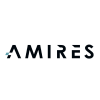ECHA published their February draft Appendix for nanoforms applicable to the Guidance on registration and substance identification and during the consultation with the nominated Partner Expert Group (PEG) they received about 780 comments. ECHA addressed most comments in an internal April version, that was shared with the PEG experts ahead of the PEG meeting held 9 April in Helsinki. During the meeting with about 25 participants from Members States, NGOs, ECHA staff and industry (David Carlander, NIA, attended) details of the April draft were discussed and agreed upon.
The technical discussions followed the main sections of the document and comments received. Among the issues discussed were the addition of examples/figure to get a clear common understanding of then sets of (similar) nanoforms can be used, and how to explain that these sets are not the same as grouping for read across purposes. The creation of sets based on the four main characteristics to be provided (size, shape, surface functionalisation/treatment and surface area) will likely create a rather large number of sets due to the large possible combination of characteristics. The surface functionalisation/treatment is likely to constitute the more complex formation of sets due to the multiple possible surface treatments.
Examples of suitable justifications to support the information provided in a dossier would also be useful. A footnote in the draft guidance clearly spells out that registrants should maintain information about particle size even if they would fall outside the nanomaterial definition due to possible enforcement actions.
Even though there is no easily available method to provide objective information on rigidity, the guidance still recommends applicants to provide indication on rigidity based on imaging and indicate e.g. number of walls for a nanotube or if it is straight or tangled.
After the discussions with the experts, ECHA will revise the guidance and share it during a 10-working days cross check exercise, where the PEG experts will be able to check if the comments have been addressed as agreed. However, during this exercise ECHA is not allowing for new comments. Following this, the draft will be circulated to the ECHA Members State Committee for commenting and approval (likely in May/June). The final approval would be in the CARACAL committee likely in September/October, before it will be published, hopefully in December 2019.
ECHA, Commission and the PEG experts present are of course aware that the publication of the Guidance in December will not allow industry to implement it or provide data following the Guidance, as the regulation enters into force on January 1, 2020.

















